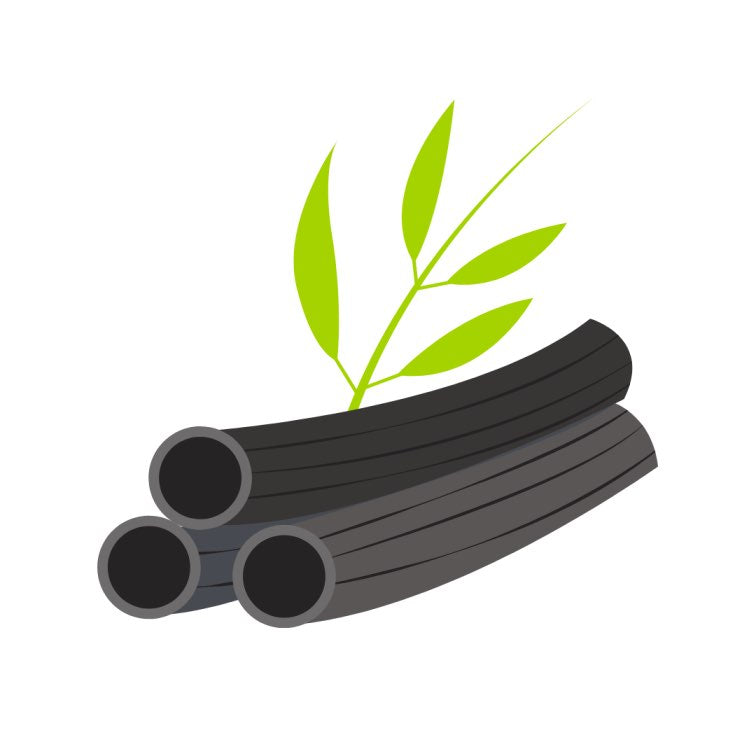Climate change has been a pressing issue for decades now, and it's starting to take a toll on our mental health. The fear and anxiety that come with the thought of environmental destruction and the future of the planet is called eco-anxiety. This type of anxiety is becoming increasingly common, especially among young adults.
According to a recent study, 68% of young adults between the ages of 18 and 34 are experiencing eco-anxiety. This alarming statistic highlights the urgent need to address the mental health impact of climate change and prioritize self-care strategies that can help individuals cope with eco-anxiety. In this blog, we'll explore what eco-anxiety is and offer tips on how to deal with it.
What is Eco-anxiety?
Eco-anxiety is a term used to describe the fear and anxiety that people feel when thinking about the impact of climate change on the environment, animals, and human society. It is a relatively new phenomenon that has emerged in response to the ongoing climate crisis. Eco-anxiety can manifest itself in different ways, including panic attacks, sleep disorders, and general anxiety.
Causes & Symptoms of Eco-anxiety
Eco-anxiety has various causes, including natural disasters, climate-related migration, and the mass extinction of wildlife species, all of which are consequences of climate change. This has resulted in extreme weather patterns, rising sea levels, and food and water shortages, causing fear of a potential global catastrophe.

Symptoms of eco-anxiety are similar to those of general anxiety, such as excessive worry, nervousness, irritability, difficulty concentrating, and a sense of impending doom. If ignored, these symptoms can escalate into more severe mental health conditions, such as depression and post-traumatic stress disorder (PTSD).
What Is Climate Change Anxiety?
Climate change anxiety is a type of eco-anxiety that specifically relates to the fear and anxiety surrounding climate change. The constant reports of rising temperatures, melting ice caps, and extreme weather patterns can be overwhelming and contribute to climate change anxiety.
Causes & Symptoms of Climate Change Anxiety
Climate change anxiety stems from the same factors as eco-anxiety, but specifically focuses on the consequences of climate change, such as the loss of wildlife, natural disasters, and human displacement. Its symptoms, including panic attacks, sleep disorders, and general anxiety, are akin to those of eco-anxiety, and individuals may also experience feelings of hopelessness, despair, and depression.
Coping with Eco-anxiety and Climate Change Anxiety
There are many ways to deal with eco-anxiety. Here are a few tips:
Acknowledge your feelings
The first step in coping with eco-anxiety is to acknowledge your feelings. Recognize that it's normal to feel anxious about the state of the planet.
Talk to someone
Talking to someone can be helpful in reducing anxiety levels. Share your thoughts with friends, family, or a therapist. They can offer a different perspective and help you put things into perspective.
Practice mindfulness
Mindfulness meditation is an effective technique to reduce anxiety levels. Practicing mindfulness allows you to become more aware of your thoughts and feelings and helps you gain a sense of control over them.
Stay informed but limit your news intake

Keeping up with the latest news on climate change is essential, but it's also crucial to limit your news intake. Constantly watching and reading about the crisis can fuel your anxiety levels.
In addition to limiting your news intake, it's also important to choose your news sources wisely. With the rise of misinformation and sensationalism in the media, it's crucial to seek out reputable sources of information on climate change. Look for sources that rely on scientific research and peer-reviewed studies, and avoid sources that rely on fear-mongering and clickbait headlines. By choosing your news sources wisely, you can stay informed without exacerbating your anxiety levels.
If you're eager to learn more about climate change and how you can make a difference, check out these useful search tips and links to a rich and diverse range of information sources relating to climate change:
- Intergovernmental Panel on Climate Change
- United Nations Climate Action
- National Center for Atmospheric Research (National Science Foundation)
- National Centers for Environmental Information (NOAA)
- Skeptical Science
- Center for Climate & Energy Solutions (C2ES)
- Global Change (U.S. Global Change Research Program)
Get involved in local environmental initiatives
Getting involved in environmental initiatives can be a productive way to channel your anxiety. Take part in local clean-up drives or support eco-friendly businesses.
Take small steps to make a difference
Making small changes in your lifestyle, such as reducing your carbon footprint, can make a big difference. Start with small steps like reducing plastic usage, using public transport, and supporting ethical businesses.
Retail Therapy for a Sustainable and Stress-Free Life
Coping with eco-anxiety can involve sustainable retail therapy. Opting for eco-friendly and sustainable products, such as clothing made from organic cotton and skincare products made with natural ingredients, can not only reduce our carbon footprint but also promote ethical business practices. By making conscious purchasing decisions, we can de-stress while making a positive impact on the planet. Additionally, using certain home products can help ease anxiety levels. Consider the following suggestions:
- Essential oils and diffusers - Certain essential oils, such as lavender and chamomile, have calming properties and can help reduce anxiety levels. Using a diffuser with essential oils can create a calming atmosphere in your home.
- Bath Products - Choose environmentally-friendly and chemical-free bath products to reduce stress levels after a long day. Opt for natural bath salts and bath bubbles made with organic herbs and essential oils. Add a few drops of lavender or chamomile oil to your bathwater for a calming effect. With the right products, a relaxing bath can be a sustainable and stress-free way to unwind.
- Aromatherapy candles - Aromatherapy candles can create a calming atmosphere and provide a sense of relaxation. Look for candles made with natural ingredients, such as beeswax or soy wax.
- Skin Care Products - Choose effective and sustainable skincare products with natural and organic ingredients and opt for reusable and eco-friendly makeup wipes and cotton rounds to further reduce waste. By choosing sustainable skincare products, you can take care of yourself while also taking care of the planet.
Taking Small Steps for a Greener Future: Coping with Eco-Anxiety and Climate Change Anxiety
Eco-anxiety and climate change anxiety are real and growing concerns in today's world. It's essential to recognize and acknowledge these feelings and take steps to manage anxiety levels. The tips mentioned above, along with the use of sustainable products, can help reduce anxiety levels and create a sense of calm and relaxation. Remember, every small step we take to reduce our impact on the planet can make a difference. Start with the small changes and save 10% on your order with the code: BLOG10.
*It's important to note that we are not medical professionals, and if you are experiencing severe anxiety or other mental health issues, we recommend seeking the advice of a licensed healthcare professional. While the tips and suggestions mentioned in this blog can help manage mild symptoms of eco-anxiety, they are not a substitute for professional medical help. Please prioritize your mental health and seek support if you need it.
If you enjoyed reading this Blog, please share it, and help us get the word out together. Thank you! 😊















